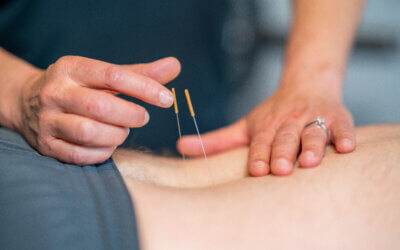Falling down is something that happens to people all the time. Unfortunately, doing so can lead to many different types of pain, including shoulder pain.
Shoulder pain after a fall can even linger for much longer than you might think. One medical study found that 32% of participants were still feeling shoulder pain a year after their initial shoulder trauma. In addition, falling can be traumatic for your shoulders — you could land directly on your shoulder, or catching yourself could damage a muscle or tendon in your shoulder. The good news is that physical therapists can help people treat shoulder pain they develop after a fall.
Physical therapists can treat shoulder pain after a fall with these three techniques
Physical therapists and many patients would prefer to address issues that increase your fall risk before a fall occurs. However, it’s not always possible to achieve this goal, and physical therapists find themselves helping patients address shoulder pain or other issues after a fall. Some of the ways they can help treat your shoulder pain include techniques like:
- Dry needling — Myofascial trigger points (MTPs), or areas of scar tissue, can develop in injured shoulder soft tissue after a fall. One way physical therapists can address such MTPs is with dry needling. This technique involves placing a monofilament needle into the MTP. The muscle then twitches and the scar tissue may be broken up. Dry needling can lead to significant pain relief. One shoulder pain study reports that dry needling led to a nearly 11% decrease in pain immediately after it was performed. Within a week, patients had experienced about a 16% reduction in their pain.
- Therapeutic exercises — Physical therapists use specific exercises to help increase strength, flexibility and function. These exercises are called therapeutic exercises. A program of therapeutic exercises can be helpful for people experiencing shoulder pain after a fall, especially if this pain is being caused by a rotator cuff tear. A rotator cuff injury study reveals that therapeutic exercises helped 60% of patients experience improved shoulder function and general health.
- Soft tissue mobilization — Ever noticed that a painful shoulder feels better after you rub it? Physical therapists can take that feeling to the next level with soft tissue mobilization (STM). Your physical therapist will apply hands-on manipulation to your injured shoulder while doing STM. This technique has been shown to help reduce shoulder pain. Researchers from one shoulder pain study report that STM helped reduce shoulder pain by nearly 27% on average.
Continuum Wellness can help treat shoulder pain you’re feeling after a fall
Is your shoulder in pain after a fall? Our Continuum Wellness physical therapists are primed to help you address your painful shoulder. They can do a free screening for you to determine the origin of your pain. Our clinicians can then put together a personalized treatment plan for you that may include the three techniques discussed above and more.
Contact our team today for more information about how we can help you treat shoulder pain or to schedule an initial appointment to begin addressing your pain.



